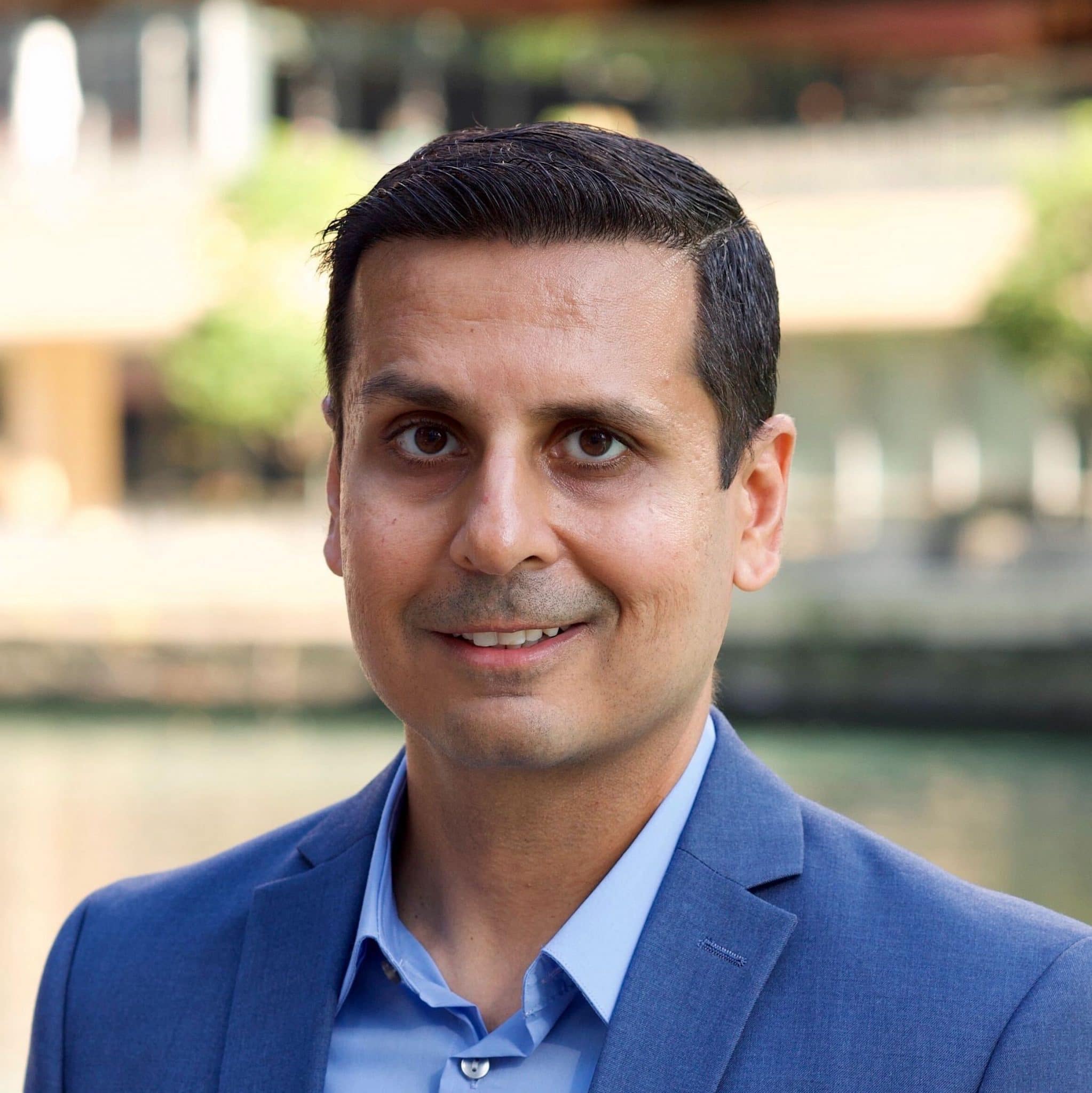Mergers and Acquisitions with Kison Patel
The M & A process is challenging and wrought with inefficiencies. Kison Patel is working to change the status quo through science and technology and shares his perspective on the changes he’s bringing!
Listen to us On
About the Episode
LifeBlood: We talked about mergers and acquisitions, how the industry is full of inefficiencies and problems, how science and technology are helping to streamline the process, and how to effectively manage change with Kison Patel, Founder and CEO of M & A Science and DealRoom, and author.
Listen to learn why empathy is an essential part of change management and a successful M & A deal!
For the Difference Making Tip, scan ahead to 19:00!
You can learn more about Kison at DealRoom.net, Facebook, Twitter, Instagram and LinkedIn.
Thanks, as always for listening! If you got some value and enjoyed the show, please leave us a review wherever you listen and subscribe as well.
You can learn more about us at MoneyAlignmentAcademy.com, Twitter, LinkedIn, Instagram, Pinterest, YouTube and Facebook or you’d like to be a guest on the show, contact George at Contact@GeorgeGrombacher.com.

George Grombacher
Lifeblood Host

Kison Patel
Guest
Episode Transcript
Come on. Strong the powerful key. Saad Patel is here on lifeblood. Welcome key son.
Kison Patel 0:18
Thanks for having me
george grombacher 0:19
here. George, excited to have you on. Keysight is the CEO and founder of m&a science and deal room, he’s working to change the status quo. Through an agile approach. his new book is m&a tactics, advice from a corporate development practitioner for each stage of the deal lifecycle case on tell us a little about your personal life more about your work, and why you do what you do.
Kison Patel 0:42
I don’t know if I have much of a personal life dictionary definition of a diseased workaholic. But I managed to have a lovely family with three great kids that end up occupying any of that time outside of work. Plus a little road biking. That’s the the detachment from everything nice. But in terms of what I do, I have a practice around mergers and acquisitions where I look at it as a market opportunity where there’s always large acquisitions that happen on a big scale between large companies, as well as on a smaller scale. And these transactions are highly inefficient. We provide technology and education on products to help make that process more efficient. So companies can end up with better results, more value, happier people,
george grombacher 1:29
which is things that we certainly all want. So you talk about how things are, how these deals, be they Big B they small, are highly inefficient. What does that mean?
Kison Patel 1:41
Well, we focus on corporate m&a. So a lot of times our clients are typically billion plus dollar corporations that will acquire a company for a specific strategic reason. And oftentimes, part of that is going to be integrating that organization into their company. And realizing value, whether it’s through hiring extremely talented people to build products for their large ecosystem, acquiring existing products and being able to distribute it across the distribution networks. You know, for those reasons, or maybe that just bridging a roadmap and what they’re trying to build and get to the market faster. That’s the their strategy. And why you hear about these corporations paying large amounts of money, even beyond what you would fathom they would pay for a company is because they have these up optimistic view on the synergies that they could capture with what they currently have, and how they can leverage it. So that’s a, that’s a great story and vision when it starts. The problem is it typically ends with a lot of pissed off people that quit their job, because they’re fed up with the change going on and then being clueless about it. And I think end to end we’re Our goal is is to work with these organizations. And understand that lifecycle that process, when you go through m&a, where you’re going through a process of making sure you’re starting with the right opportunity to begin with, it’s a get that’s aligned with the strategy and having a clearly defined strategy. But then as you go through a process, it just continues to get more complex, you get more information, you add more people, you learn about it. And a lot of times we pursue these deals with limited information on the financials. And I would define that, as a traditional view is very much financial focused. And we don’t emphasize the people side as much. And now when you go through the process, it becomes more and more important that people are aligned about what’s happening. Why is it happening? How are they involved, and that when you follow that traditional model, and it’s mainly based off of what happens at the beginning, with a financial view, you don’t really iron filling these pieces that matter the most, that really connect that idea and vision to the teams being aligned on priorities and executing, driving towards the goal, that that communication gets lost. But the bigger challenge is change management. If you’re going to try to go through and make significant amounts of changes through people’s benefits, accounting systems, CRM zrp systems, the way of working, when you take away slack from a group of developers, you’re gonna have a pissed off group of developers. So you know, how do you do that and make it into an efficient process that creates a better people experience.
george grombacher 4:32
everything you just said makes sense. Is it that this hasn’t been done because it lack of, of, of knowledge, a lack of caring, a lack of technology, a little bit of everything,
Kison Patel 4:48
probably a little bit of everything. There’s a disconnect, oftentimes there’s a team that job is to go out, find the opportunities execute on it, they hand it over to another team whose job is to do the integration And then there tends to be a disconnect there, that you don’t have this continuity of the vision, the plan, and even getting the people involved, right that’s responsible for executing the activities that create value on the deal. Not getting them involved early enough was a common thing that the industry is really shifted forward on the past five years. But there’s a lot of factors there. I think there’s a science that underpins all of this, George, that’s so far behind. And it’s not it’s behind by nature. If you look at corporate m&a, it’s only matured in the past 15 or so years. It’s not like other industries, accounting medicine, where we have centuries of information and development around where we really standardized practices. m&a doesn’t have that it’s lacking standardization and the industry, even with the nature of secrecy, operates in a silo. When we work with corporations, they all have their distinct unique way of looking at and approaching m&a. And that’s that’s where the idea of science is applicable in this industry there there needs to be more studying, identifying what’s actually proven what’s working, that’s only emerging now. I think that was the opportunity we saw is this industry lacks standardization. How can we come in and, and help with that? What makes it unique is the industry. It’s different than other industries. If we look at FinTech, thinking of cryptocurrency, defy all these other emerging areas, robo advisors, it’s a lot around algorithms and quantitative data. When you look at m&a, that doesn’t work. It’s all based off a bunch of assumptions on people having their shit together to be able to execute and create a lot of value hit goals, that requires qualitative research, or talking to people pulling out their insights from their experience, then identifying patterns and understanding where things go wrong, where things go, well, where what do we need to do to start standardizing those behaviors? But I think that was the challenge of why this industry has been behind on the science component of it.
george grombacher 7:11
Yeah, well, that certainly makes sense. I was just sort of picturing in my mind, every different part of why a company would want to make an acquisition, and then all the, all the opportunities and messiness of all of a sudden, things are new for all the human beings in the organization. And how do we see the thing through so that, you know, the deal actually gets done, but then it’s that it is possible that the visions are aligned and the wants and the needs and all these things, and the change is, is is managed as as as carefully as possible or effectively as possible. The term science is that’s it’s it’s giant, tiny. So what are there certain things that that you really look at and point to and say, Okay, this is this is what we need to really be focused on.
Kison Patel 8:10
I started with one thing, when we first started, it was figuring out diligence, because that was the area I was most familiar with worked as an advisor 10 years prior, understood it, understood how inefficient it was, originally got inspiration from the software industry, seeing how software engineers were utilizing project management tools to more effectively develop software. Then seeing how that trend was sprouting into other industries, like education, construction, why not m&a lead that originally get an idea for starting dealroom. As we started working with companies, we realize there’s problems everywhere, there’s problems on the front end of the deal, managing sourcing opportunities, tracking, combining information, getting stuff off of Excel across the board, getting stuff out of email, across the board, especially internal communication, then integration, those guys have it the worst, they get no love, they get these huge projects and full accountability to deliver on it. And you kept in the dark for too long, you should have had them upfront early talking to the CEO of the company, briefing him letting him know, hey, this is how we see you getting integrated, let us tell you about the company and what’s that going to look like. Because we want your full executive support in this and have alignment on the changes that we’re gonna make, and then bring their other management team involved with that clarity upfront and the transaction. That’s the biggest problem George’s is just the magnitude of change management. You know, we think about like in our organizations making software adoption, let’s pick up a CRM, that’s a big thing. Next thing you know, you’re sending surveys around creating a committee to help bet and decide which solution you’re going to use. When you’re going through an acquisition. You’re essentially taking organization and peeling Back layer by layer, then reattaching it onto your company. That’s, that’s tough. That’s a huge change is highly disruptive. That’s why people, people, some people don’t even like change at all. They don’t want to fail and start using slack. So
george grombacher 10:16
because Are you sure you want to do this work? It sounds like it’s almost impossible.
Kison Patel 10:21
I think that’s a challenge. Like, it’s so tough that even we were creating all this content, we write books in the industry, there’s endless, there’s so many different problems that extend out into every little bit of the company. You’re thinking about integrating by function. It’s just all these little pieces that touches and there’s some change that needs to happen. And how do you manage that?
george grombacher 10:44
Yeah, even assuming that both parties were doing a great job. But the reality is that one of those parties is probably has their own dysfunction. And now we’re trying to merge those two together. So
Kison Patel 10:56
I think the other part is, when you do get them involved, in least you understand where the compromises because there’s a level of integration, you could go very deep, full integration, or light integration. But having the other company you’re acquiring involved to understand where they’re at, then you understand like, these sales reps are married to slack. If you take that away, that’s gonna piss them off. They’re kind of looking for new jobs, like knowing that stuff, where do those risks early and then reconsidering saying, Hey, I know, we’re trying to save a few bucks by having one chat tool or enabling that across the organization. But maybe we give them best of both worlds? I don’t know.
george grombacher 11:33
Yeah, yeah, fascinating how, obviously, in any kind of an interaction that human beings engage in what the expectations are is such an enormous thing. So I imagine that being able to talk to those departments and talk about having CEO on board, you better have that person on board. But then people at every level need to be, for lack of a better term bought in to the fact that this process is going to be difficult, and we’re going to do our best to meet your needs, but some of them certainly won’t be.
Kison Patel 12:01
There is a big list a lot of conversations around culture, and m&a, particularly when you acquire companies, and they’re looking to integrate with very unique, distinct cultures. And we’ve seen deals totally blow up. Because these were polar opposite cultures that not like magnets, they stick together, they’re pushing each other away. And that’s another often this area is thinking of the culture, but building into the values of each organization for the beginning. A lot of times, it’s the CEOs or Corp dev leaders that are originating these transactions, but being able to have clarity on both organizations values, and aligning where they’re complementary, getting that understanding to get a sense of if there’s where the cultures would fit well, where there may be some challenges, or maybe some big red flags and why the deal shouldn’t be done because of that.
george grombacher 12:55
Hmm, how often does that happen?
Kison Patel 12:59
People don’t do that, we’re gonna say that’s where we need to shift from the finance focus to the people focus, you get caught up in your thinking is, hey, we got numbers to hit and our culture’s, to hit these numbers, you start pushing some of that stuff aside. And I think that that’s the shift, and the thinking, is really starting to evolve and is trending is getting that sense, because when you do have that, you get a lot of other things, right, you don’t build this valuation model for $100 million, only realize half the value, but have a charge team that’s gonna blow past those numbers. Because ultimately, how well the company operates after you close on it determines if you’ve gotten if you met that valuation model you originally assumed on or not. And that’s where the focus needs to be. To really get that that sense of how this is all going to come together, have that level of confidence that you’re gonna get those numbers and maybe bond beyond that as well.
george grombacher 14:00
So fascinating. I like to think about things in terms of having an art of doing something and then the science behind it. And you can tell me where I’m off base or kind of getting it wrong. But the science here, we need to understand the diligence and we need to understand really, so much about both entities and how we expect or hope to integrate them is the art in essence, that agile approach.
Kison Patel 14:33
I think agile is still science. It’s about creating repeatable processes. We call these artifacts plays where you can build out a step by step technique, and make it repeatable, that can share this with another practitioner, they can implement this technique into their practice. The art is what with industry has this swagger being able to co out negotiate deals make that happen like that, that stuff art is there. I think the the people component Not so much art, it goes back to good leadership. Do you have this this model where you really are a good leader, that you have some clear principles that you build your leadership around, that you can be transparent about in that approach? And your team members align around it, and it works in some companies don’t is that pure top down management approach? And it’s, um, you know, it’s an order taking versus Do you enable a collaboration where people are acting on their own bringing ideas to the table?
george grombacher 15:33
I love it. I think that makes a lot of sense how, how the Agile process? It’s definitely it is science. And aligning that with values and using your values as a way to make decisions about things. Sort of like a decision tree.
Kison Patel 15:55
Yes, I think that the values are key. Agile can be interpreted in so many different ways, George, and for me, I look at there’s now there’s all these different related techniques that enable agility. But bottom line is if you can create a change oriented culture, if you can get a change oriented, a culture that’s constantly and willing to try new things, see what works, what doesn’t throw it out, iterate on it, keep doing that. So there’s progress for continuous improvement. consistently, that’s, that’s ultimately where you’re trying to achieve. If you do that, you’ll get better month after month, you’ll constantly get better. But if you don’t have that, then you can take agile classes all you want and hire coaches, but it’s not going to do anything,
george grombacher 16:38
right. So is your current experience your your vision, one where you’re going to be able to look at two entities and know enough about them through upfront work and diligence that you can say, I think this is going to take six months, 12 months, two years, three months.
Kison Patel 17:02
I maybe if we go to the AI route and start looking at can we bring the human level intelligence to machine and start scoping out? Where do these deals look like how much human reviews needed versus could be automated, we can start scoping deals out that way. I think our goal and mission right now is just harvest information and really educate the market that there’s a lot more to this that’s missing we are practices behind and there could be much more forward thinking in the industry to know this is the ideal approach. This is how you stay focused on the people create a good experience get everybody involved in the change that’s needed so it goes way better than it currently does. Then that’s like opportunity create a lot of value drive efficiency. Even if we take optimization we look at financial transactions and it’s always say the big points on what we can on every little deal that happens. I mean, I mean it is expensive, we’re gonna do $100 million deal it’s about 5% goes in fees to get those deals done. That’s about $5 million and $100 million deal there’s a lot of people trying to solve that problem because there’s too many people that are making money on that inefficiency you know there’s a lot of folks on the consulting side legal side banking side that I’ll get a slice of that and it’s it’s just a you know, who wants to try to efficiency when the model is in your favor of inefficiency. But I think that that’s a bigger opportunity when you look at not only bringing in the best practices but technology to drive efficiency and industry there’s a lot of cost savings that and reapplying that value into other areas like integration cashed out some good bonuses create some good you know welcome parties, events and people if people have a good experience that that probably motivate them and create a lot more value
george grombacher 18:51
that makes sense and like it keyshot people are ready for your difference making tip What do you have for them
Kison Patel 18:59
empathy I think that’s the theme of our conversation. We talked a lot about people managing the change of people but the one thing that you can always be more proactive or conscious on is taking the time try to connect with people make them feel felt. I think it goes across the board like I have to remember to go do it with my own kids Remember to stop and be like hey, can we just check in like I know you’re going through a tough time or I know you know you’re not the biggest fan of school II know your teacher always gives you a hard time and this and that. But the hard things go in and it just it means so much. I you know sometimes we’re in these stressful situations and we get that like conflict opposing views, but you can defend your views to death and other person going to do the same thing. If you can take the time to understand where they’re coming from, why they think the way they do or they feel about the way they think they do and spend the time to do that that person realizes that you’re doing it and they’ll in turn reciprocate and be more open to understood In your views, there’s just a lot that can go into being more empathetic
george grombacher 20:06
well i think that that is great stuff that definitely gets come up come on I totally agree. Empathy can be a superpower for sure. So and we do have to remind ourselves to be empathetic with our children don’t we? He said
Kison Patel 20:22
you know, and one thing that’s been really helpful for another fun tip is these gun range earmuffs that I remembered I used to have like three pairs get around the house. So sometimes you get the high decibel in your head feels like it’s gonna explode you just put these gun range here most and remind yourself like Alright, calm down, be like how you doing?
george grombacher 20:43
That is absolutely invaluable difference making tip right there. I love it.
Kison Patel 20:47
That’s a parenting tip for any parents. I didn’t plan on having such a big heartfelt conversation about people emotions, George, but I did enjoy the conversation.
george grombacher 20:58
I love it. Likewise. Thank you so much for coming on. Where can people learn more about you? How can people engage with you?
Kison Patel 21:04
I want to learn about m&a. we accompany m&a, science, ma science Comm. We have over 350 pieces of publication publicly available on all topics m&a, myself, I’m on LinkedIn. He’s ke Sanki is o n Patel on LinkedIn.
george grombacher 21:21
Excellent. Well, if you enjoyed this as much as I did, showcase on your appreciation and share today’s show with a friend who also appreciates good ideas, go to m a science COMM And check out all those great resources that keyshawn has available. And you can find him on LinkedIn as well. I’ll list all those in the notes of the show. Thanks khakis on. Thanks for your time. And until next time, keep fighting the good fight. We’re all in this together.
Transcribed by https://otter.ai
More Episodes
Beyond the Bank Balance: Cultivating a Soulful Relationship with Money
You don’t need to be a Wall Street shark or a personal finance guru to develop a healthy relationship with money. In fact, most of us start with little more than a jumble of beliefs and habits passed down from our families. But if you’ve ever found yourself stressed...
How Using AI Can Help You Gain Clarity Into Your Financial Future
In today's fast-paced, data-driven world, achieving financial clarity can feel like an overwhelming task. With numerous financial decisions to make—from budgeting and investing to retirement planning and debt management—it's easy to feel lost in the complexity of it...
How AI Can Help Improve Your Personal Finances
1. Smarter Budgeting and Expense Tracking AI-powered tools like Mint, You Need a Budget (YNAB), and PocketGuard can automatically categorize your expenses, track your spending in real time, and even alert you when you’re about to exceed your budget. These tools...
Trust and Confidentiality When Using AI as Your Financial Coach: Safeguarding Your Sensitive Data
In the digital age, artificial intelligence (AI) has revolutionized many aspects of our lives, including personal finance. AI-powered financial tools have become a go-to resource for budgeting, investing, debt management, and even retirement planning. But as more...
How AI Can Be Your Personal Financial Coach: Unlocking the Future of Financial Success
In today’s fast-paced world, managing your finances can feel overwhelming. With so many options for saving, investing, and budgeting, it can be hard to know where to start or how to stay on track. Fortunately, advances in technology—specifically Artificial...
How Technology and AI Are Benefiting Investors and Consumers in Securing Their Personal Financial Futures
In recent years, the rise of technology and Artificial Intelligence (AI) has profoundly transformed the financial landscape. These advancements have empowered investors and consumers to make more informed, efficient, and personalized decisions about their financial...
10 Things New Parents Should Be Thinking About Regarding Their Personal Finances
Becoming a parent is one of the most joyful and transformative experiences in life. However, it also brings new financial responsibilities and challenges. If you’re a new parent or expecting, it’s crucial to plan ahead to ensure your family’s financial security. Here...
10 Things Newlyweds Should Be Thinking About Regarding Their Personal Finances
Marriage marks a new chapter filled with excitement and partnership. While love may be the foundation, financial harmony is key to building a stable and happy life together. To set yourselves up for success, here are 10 essential financial topics that every newlywed...
Financial Tips for New Parents: Building Stability and Security for Your Growing Family
Becoming a parent is one of life’s most rewarding experiences, but it also brings significant financial challenges. From diapers to daycare, the costs add up quickly. Whether you’re a first-time parent or adding to your family, managing finances wisely is crucial for...
Join the show.
Interested in being on the show? Tell me a little bit more about you and what you’d like to talk about!














